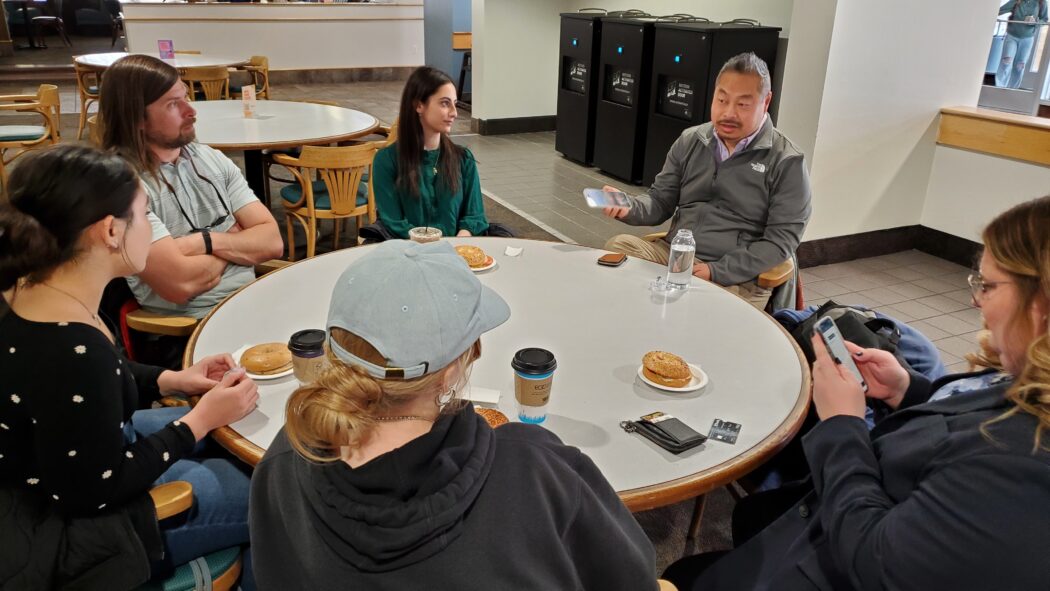Theodore Kim of The New York Times brings a message of mentorship, momentum to Logan campus
Theodore Kim, director of career programs at The New York Times, visited Utah State University Logan campus on March 20 to share career advice, industry insight and a reminder the path to journalism’s most prestigious institutions doesn’t have to begin on the East Coast. In fact, Kim said while the Times has never hired someone from Utah State, that’s something he hopes to change.
“The world needs you,” Kim said, looking out at a room of students. “And it’s not by happenstance that I’m in Utah.”
The visit, coordinated by the USU journalism and communication department head Brian Champagne, was initiated by Kim himself.
He first connected with USU faculty through a mutual contact in the journalism education community, expressing interest in speaking to students outside typical recruitment hotspots.
“Ted reached out to us,” Champagne said. “The NYT is looking to hire from more than just the East Coast, and they think Utah is important enough to visit.”
Kim also made stops at the University of Utah and BYU during his trip.
It was his first time visiting Utah, and he noted being impressed by the passion and curiosity of the students he met.
In his talk, Kim reflected on his winding career path, which included stints at newsrooms in Maryland, Indiana, Texas and The Washington Post before settling at he Times. He described himself as a “late bloomer” who didn’t choose journalism until his senior year of college.
“Your career is not a straight line,” he told students. “It’s more like Sardine Canyon — twisty, unpredictable and full of detours, and that’s okay,” Kim said.
Throughout the hour-long session, Kim repeatedly returned to two central ideas: transferable skills and meaningful repetition. He encouraged students to understand their own strengths, whether in social media, podcasting, writing or video, and to recognize how those skills can be applied across platforms as the media landscape continues to evolve.
He also emphasized the growing importance of multimedia journalism and digital fluency in today’s job market.
“The key is to understand where the growth areas are and where you fit into that equation,” Kim said.
He also addressed the anxiety students feel about job hunting and imposter syndrome.
Many students nodded along or took notes as Kim spoke candidly about rejection, uncertainty and learning to find value in every experience.
“Everyone at the Times has imposter syndrome,” Kim admitted. “Even Pulitzer Prize winners.”
He offered practical advice on navigating early career moves, emphasizing that first jobs are just stepping stones, not lifelong commitments.
“This isn’t the 1920s. You’re not working 57 years for Duracell and getting a gold watch,” Kim said when referring to growing in jobs and commitments.
“What matters more is growth — learning, improving and staying curious,” Kim said.
Attendee Anna Lieberman stood out to Champagne.
“Her father raised her on the Times and still mails her a physical copy,” Champagne said. “I’m sure it was a good day for Anna — probably even better for her father.”
To show appreciation, USU gifted Kim some signature Aggie Ice Cream and Aggie Chocolate.
“The future is bright,” Champagne said. “And the Times is attainable if you’re willing to work for it.”
You must be logged in to post a comment.


There are no comments
Add yours